
Imagine you pick up a jacket. The surface feels soft and velvety. Suede fabric is special because it has a fuzzy finish. It feels gentle when you touch it. You can see how suede is not like smooth leather. It is also different from plant-based fabrics. Suede looks fancy and feels rich. Many designers use suede for shoes, jackets, and bags. Big brands often include suede in their lines. People like suede because it is stylish and comfy. Suede Fabric Revealed explains why knowing about suede helps you make smart fashion choices.
Suede gives a feeling of luxury.
Designers use suede to make things look fancy.
Suede was important in fashion history and is still liked today.
Key Takeaways
Suede is a fancy fabric. It feels soft and fuzzy. Many people like it for clothes and accessories.
Natural suede comes from animal skins. Faux suede is made from man-made materials. Faux suede is better for the environment.
You need to take care of suede. It can get dirty or stained very fast. You must clean it in a special way to keep it looking nice.
Suede has been used in fashion for a long time. People wore it even in the Middle Ages. It is still popular for old and new styles.
Picking eco-friendly suede or other options helps the planet. You can still enjoy suede’s comfort and style with these choices.
Suede Fabric Introduction
Suede: A Symbol of Luxury
When you see suede, you notice its rich and elegant look right away. Many people think of suede as a symbol of luxury. Designers choose suede for high-end fashion, shoes, and even luxury cars. You might find suede in fancy handbags or on the seats of premium vehicles. The material stands out because it instantly makes any item look more stylish and expensive. Suede comes from the underside of animal skin, usually goats or lambs. This gives it a soft and thin feel that is hard to match. When you wear suede, you feel the difference. It feels gentle against your skin and adds a touch of class to your outfit.
Tip: If you want to add a touch of elegance to your wardrobe or home, suede is a great choice.
Texture, Feel, and Timeless Appeal
Suede has a smooth, velvety texture that sets it apart from other fabrics. The nap, or raised fibers, creates a fuzzy finish that feels soft when you touch it. This softness is one of suede’s most loved features. You will notice how the surface catches the light, giving suede a special visual depth. This makes it popular for clothing worn close to the skin, like jackets, shoes, and gloves. Suede also works well in home décor, such as cushions and furniture, because it brings warmth and comfort to any space.
The timeless appeal of suede comes from its unique look and feel. You can use it in both classic and modern styles. Whether you want a bold statement piece or a subtle accent, suede fits many needs. Suede Fabric Revealed will help you understand why this material remains a favorite in fashion, accessories, and home design. In the next sections, you will learn more about what makes suede special and how you can use it in your own life.
Suede Fabric Revealed: What Is It?
Definition & Texture
When you touch suede, you notice its soft and velvety surface right away. Suede comes from the underside of animal skin, which gives it a unique feel. The surface has a fuzzy layer called the nap. This nap makes suede different from smooth leather or plant-based fabrics. You often see suede used in jackets, shoes, and bags because of its gentle touch and stylish look.
If you look closely at suede, you see tiny, raised fibers that cover the surface. These fibers create a smooth and even texture. The nap can feel softer or tougher depending on the animal and how the suede is made. Lighter leathers, like those from young animals, give you a softer and smoother suede. The dense and fine short hairs on the surface make suede pleasant to touch and give it a rich appearance.
Key Characteristics: Softness, Nap, and Visual Depth
Suede stands out because of three main features: softness, nap, and visual depth.
Softness: You feel a gentle, cushiony touch when you run your hand over suede. This softness comes from the fine, short hairs on the surface.
Nap: The nap is the layer of tiny fibers that stick up from the surface. It gives suede its fuzzy look and feel. The nap also changes how the fabric looks in different lighting.
Visual Depth: Suede reflects light in a special way. When you move suede, the color can look lighter or darker. This effect adds depth and makes each piece of suede unique.
Note: The nap can wear down over time, so you need to care for suede to keep it looking its best.
Suede vs. Other Materials
You might wonder how suede compares to other fabrics. Here is a simple table to help you see the differences:
Material | Texture | Appearance | Common Uses | Care Needs |
|---|---|---|---|---|
Suede | Soft, fuzzy nap | Matte, rich depth | Shoes, jackets, bags | Needs protection |
Smooth Leather | Slick, firm | Shiny, polished | Belts, wallets | Easy to clean |
Faux Suede | Soft, even nap | Uniform look | Fashion, upholstery | Easy to clean |
Cotton | Smooth, woven | Matte, flat | Shirts, bedding | Machine washable |
Suede feels softer than smooth leather and has more texture. Faux suede looks and feels similar to real suede, but it is made from synthetic fibers. Cotton and other plant-based fabrics do not have the same nap or depth as suede.
Natural vs Faux Suede — What’s the Difference?
You can choose between natural suede and faux suede. Each type has its own features and impact on the environment.
Natural suede comes from animal hides. It feels soft and lasts a long time, but making it uses a lot of water, land, and feed. Animal farming and processing also release chemicals and greenhouse gases. When you throw away natural suede, it does not break down easily and is hard to recycle.
Faux suede is made from synthetic fibers. It does not use animal resources, so it is more sustainable. Some faux suede can be recycled, which helps reduce waste. Faux suede also performs better in life cycle management, especially if made from recyclable materials.
Tip: If you want a more eco-friendly option, look for faux suede made from recycled fibers. This choice helps protect the environment and still gives you the soft feel of suede.
Suede Fabric Revealed shows you that both types have pros and cons. You can make a smart choice by thinking about how each type affects the planet and fits your needs.
Origins & History
Historical Background
Suede has been around since the Middle Ages. Craftsmen in Europe used animal skin’s soft underside. They made gloves and clothes for rich people. Suede showed wealth and high status. People liked its smooth feel and fancy look. Over time, suede spread to more places in Europe. It was seen in royal courts and with rich families. Suede Fabric Revealed explains why suede became popular. It felt special and looked nice.
Animal Origins
Suede comes from different animal skins. Each skin makes suede feel and last in its own way. Here are the main types:
Sheepskin comes from young animals. It is soft and gentle.
Pigskin is tough and lasts long, but is less soft.
You can see the differences in this table:
Animal Hide | Characteristics | Durability |
|---|---|---|
Cowhide | Thicker, more durable, keeps soft feel | High |
Sheepskin | Very soft and gentle, from young animals | Moderate |
Pigskin | Thick and tough, lasts a long time | High |
Deer | Not common, hides marks on the skin | Variable |
Cowhide makes suede that is strong and lasts long. Sheepskin gives a soft and gentle feel. Pigskin is tough and good for things that need to last. Deer suede is rare and used when the skin has marks.
Suede in European Craft and Fashion
Suede is used in many crafts in Europe. People made gloves, shoes, and small items with it. Suede became popular in fashion in the 1900s. Designers liked its soft feel and rich look. You see suede in jackets, boots, and bags. European brands made suede famous around the world. Today, suede is in old and new styles. People pick suede for comfort and its classic look. You learn suede is leather, but it is special because of its texture and finish.
Structure & Making

How Suede Is Made
You may wonder why suede feels so soft. Making suede starts with picking good animal hides. Workers clean the hides first. Then they get ready to turn them into suede. Here are the main steps:
Slaughtering and Skinning: Workers take the hide off the animal.
Drying and Tanning: The hide dries. Lime and tannins are added. These help stop the hide from rotting.
Splitting and Thinning: The hide is split into layers. The soft underside becomes suede.
Sanding and Brushing: Machines sand and brush the surface. This makes the fuzzy nap that is special to suede.
Dyeing and Finishing: Workers add color and finish the suede. This makes it look even and rich.
Quality Control: Experts check the texture, thickness, and color. They test if the suede is strong.
Tip: Special oils and salts help suede stay soft and last longer. Some places use synthetic chemicals to make suede tougher.
Each step uses machines and tools to make suede look and feel nice. Sanding and brushing give suede its famous nap. Quality control checks that every piece is soft and looks good.
Suede Structure
Suede is different because of how it is made inside. It is lighter and bends more than regular leather. The underside of the hide has loose collagen fibers. This makes suede soft and easy to bend. Suede fits your body fast and does not feel stiff.
Other leathers use the tough outside part of the hide. That part has tight fibers. It makes those leathers strong but not flexible. Suede’s loose fibers give you comfort and a gentle feel. You can wear suede for a long time and still feel good.
Suede is light and bends easily.
Loose collagen fibers make it soft and easy to move.
Other leathers are tough because their fibers are packed tight.
Suede Fabric Revealed helps you see why suede is special. You get comfort, style, and flexibility in one fabric. When you pick suede, you choose something that feels nice and looks cool.
Uses & Benefits

Fashion & Accessories
Suede is used in many clothes and accessories. Shoes and boots made from suede feel soft and nice. Jackets and skirts use suede to look fancy. Handbags, wallets, and belts show suede’s pretty style. Designers pick suede because it stands out. People who like fancy things want suede. More brands now use faux suede and recycled materials. This helps the planet and keeps the look you like. Suede Fabric Revealed explains how new trends and technology make suede popular in stores and online.
Application | Description | Market Contribution |
|---|---|---|
Footwear | Suede shoes and boots are soft and comfy | Big part of the suede market |
Apparel | Jackets and skirts make outfits look fancy | Makes fashion more stylish |
Accessories | Handbags, wallets, and belts look elegant | For people who like luxury |
Upholstery | Furniture and car seats use suede for strength | Makes rooms and cars look fancy |
Tip: You can pick eco-friendly suede, like bio-based or recycled faux suede, if you want to help the planet.
Home Uses
Suede can make your home feel warm and nice. It works well for couches, pillows, and blankets. Suede makes furniture soft and cozy. You see suede in living rooms and bedrooms. It gives a natural and pretty look. Microfiber suede is good for places with water. It does not get wet as fast as real suede. You can use it outside or in damp rooms.
Suede makes chairs and sofas soft.
It gives your home a cool and special look.
You can pick many colors to match your room.
Note: Microfiber suede is simple to clean and lasts longer in busy homes.
Pros & Cons
You should know the good and bad things about suede. Suede feels soft and warm. It looks special and natural. It lets air through and lasts a long time. But suede can get dirty fast. You need to clean it a lot. Suede does not stop water or dirt well. Cleaning suede can be hard and cost a lot.
Disadvantages of Suede Fabric | |
|---|---|
Soft and Warm | Gets Stained Easily |
Natural and Breathable | Needs Lots of Cleaning |
Looks Special | Can Cost More |
Lasts a Long Time | Gets Dirty Fast |
Hard to Clean | |
Alert: If you want something easier, try microfiber suede. It keeps out water better and is simple to take care of.
Sustainability & Alternatives
Environmental Impact
You may wonder how suede affects the earth. Making natural suede uses lots of water and chemicals. Workers treat animal hides with chromium. Chromium is a heavy metal. It can pollute water and soil. This hurts plants and can make people and animals sick. Raising animals for suede makes greenhouse gases. Livestock farming causes about 18% of global emissions. Farmers cut down forests for animal space. This leads to deforestation and more pollution from farms. Choosing suede means you support a process that uses many resources and can harm nature.
Alert: Tanning suede can release bad chemicals into rivers and land. You help protect nature by learning about these effects before you buy.
Eco-Suede & Certifications
You have more choices now if you want to help the earth. Eco-suede uses fewer chemicals and less water. Some brands make eco-suede from recycled fibers or plants. Neoluxe™ is one example. It looks and feels like premium suede. It lasts longer and is easier to clean. This means you throw away fewer things and make less waste.
Certifications help you find better products. Look for labels like OEKO-TEX® or Global Recycled Standard. These show the suede or its alternatives meet strict rules for safety and sustainability. When you see these labels, you know the product uses safer chemicals and comes from good sources.
Tip: Always check for certifications when you shop for suede or faux suede. Certified products are safer for you and better for the earth.
Comparing Alternatives
You can pick from many plant-based and vegan choices instead of animal suede. These options offer different benefits and help lower harm to the earth.
Ultrasuede: Vegan, strong, and keeps out water.
Microsuede: Made from polyester microfibers, soft and tough, used for furniture.
Piñatex: Made from pineapple leaves, light, bends easily, and has a special texture.
Cactus Leather: Strong and very water-resistant, made from cactus plants.
Mushroom Leather: Soft, suede-like feel, made from mushroom roots.
Apple Leather: Strong, made from apple industry leftovers.
Cork Leather: All natural, light, waterproof, made from oak tree bark.
Mirum: No plastic, made from natural rubber and plants.
You see that apple leather lasts a long time. Cactus leather keeps out water very well. Mirum is special because it does not use plastic and comes from good plants.
Alternative | Durability | Water Resistance | Eco-Friendly Features |
|---|---|---|---|
Ultrasuede | High | High | Vegan, long-lasting |
Microsuede | High | Moderate | Soft, easy to clean |
Piñatex | Moderate | Low | Made from waste pineapple leaves |
Cactus Leather | High | Very High | Made from cactus, low water use |
Mushroom Leather | Moderate | Low | Biodegradable |
Apple Leather | Very High | Moderate | Made from food waste |
Cork Leather | High | High | Renewable, waterproof |
Mirum | High | Moderate | Plastic-free, plant-based |
Eco-suede and choices like Neoluxe™ last longer and need less care. You replace them less often, which helps the earth. Faux suede is cheap and resists stains, but it is made from synthetic fibers. These fibers can pollute water with microplastics and do not break down easily. Making faux suede uses lots of energy and fossil fuels. Every time you wash faux suede, tiny plastic bits can enter rivers and oceans. This makes faux suede less good for the earth over time.
Note: Picking strong and certified eco-suede or plant-based choices helps you lower your impact on the earth. You support better ways and get products that last.
Suede Fabric Revealed shows you how your choices matter. You can pick materials that look and feel great while caring for the earth.
Market & Value Insights
Price Drivers
Suede prices change for many reasons. Brands decide prices by what people want. If people have more money, they buy fancy things. When living standards rise, more people want stylish suede. Fashion trends change a lot. Designers make new styles, and people want them. Tourists buy suede as souvenirs when they travel. Many shoppers now care about the planet. They look for eco-friendly suede. Brands talk about how their products help nature. People want leather that is comfy, cool, and fancy. Famous brands cost more because people know their names.
More people have extra money to spend.
Living standards are getting better.
Fashion styles change often.
More people travel and buy souvenirs.
People care more about the planet.
Many want comfy and stylish leather clothes and shoes.
Famous brands are more popular.
Suede Quality Grades
Suede comes in different grades. Each grade changes how it feels and looks. Suede is soft and looks rich. Some think suede is cheap, but it depends on where you buy it. You like suede for its texture and look.
Experts grade suede by hide quality and how it is tanned. Thickness and finish also matter. More natural grain means stronger suede. Tanning changes how suede feels and its effect on nature. There are five main grades:
Grade | Features | Durability | Price Impact |
|---|---|---|---|
Full-grain | Strong, natural, ages well | High | Highest |
Top-grain | Smooth, less grain, easy care | High | High |
Genuine | Processed, less natural grain | Moderate | Moderate |
Split | Soft, flexible, less durable | Low | Lower |
Bonded | Mixed fibers, least durable | Very Low | Lowest |
Full-grain suede costs the most. You pay more for better feel and longer life.
When to Choose Suede Over Other Materials
Pick suede if you want style and comfort. Suede is great for shoes, jackets, and bags. It feels soft and looks fancy. If you want gentle and rich fabric, suede is a good pick. Faux suede or eco-suede is easier to care for and better for nature. If you need strong and waterproof material, choose smooth leather or plant fabrics. Suede is best for luxury and a classic look.
Tip: Check the grade and where suede comes from before buying. Good suede lasts longer and feels nicer.
You have learned that suede feels soft and comes from animals. Suede has been popular for a long time. Now, there are many choices that are better for the earth. Some new ideas use plants and old materials to make suede. Factories can also use less water and safer dyes. The table below shows how things are changing:
Sustainability Trend | Description |
|---|---|
Plant-based Materials | Made from pineapple leaves, apples, mushrooms; reduces environmental impact. |
Recycled Materials | Uses waste textiles and bottles; lowers resource use. |
Waterless Tanning | Cuts pollution during production. |
Eco-friendly Dyes | Low toxicity, safer for the environment. |
If you want to help the earth, check for special labels from the Leather Working Group. Pick brands you can trust. Choosing eco-friendly suede or other options is good for the planet.
FAQ
What makes suede different from regular leather?
You notice suede feels softer and looks fuzzier than regular leather. Suede comes from the underside of animal skin. Regular leather uses the outer layer, which feels smoother and looks shinier.
Can you wash suede at home?
You should not wash suede in a washing machine. Water can damage the nap and texture. Use a suede brush or a special cleaner. For tough stains, you may need a professional cleaner.
Is faux suede better for the environment?
Faux suede does not use animal hides. Some types use recycled fibers, which helps the planet. However, synthetic faux suede can shed microplastics. Always check for eco-friendly certifications before you buy.
How do you protect suede from stains?
You can spray suede with a protective spray. This helps block water and dirt. Brush your suede items often to keep them clean. Store them in a dry place away from sunlight.






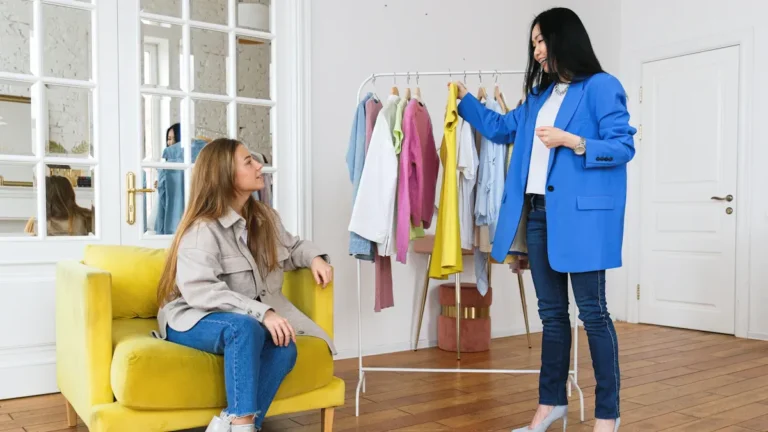

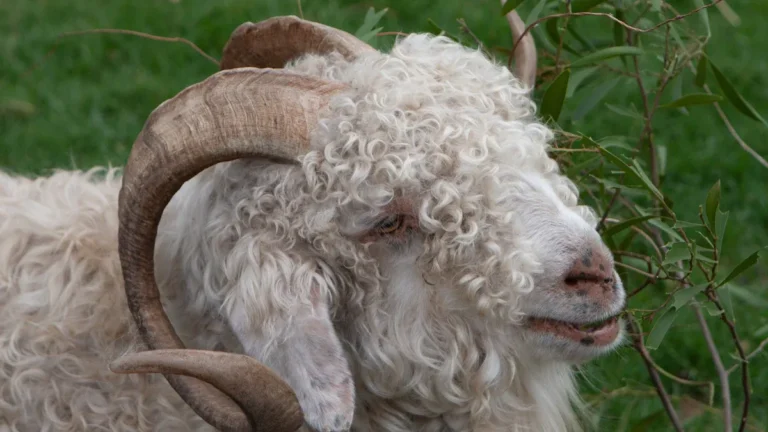

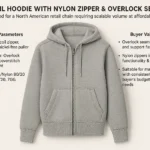
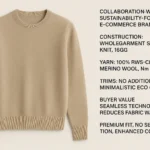



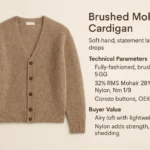
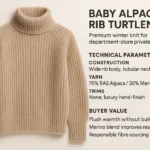
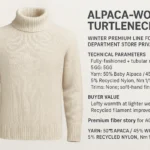
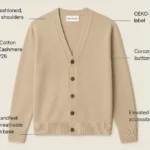
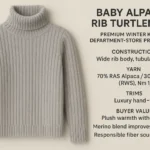
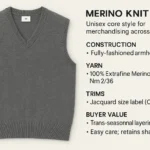
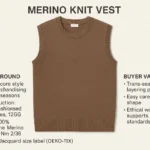
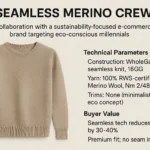

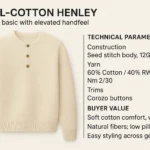
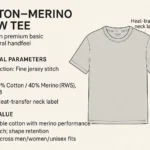
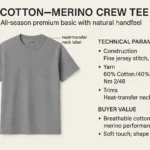

4 thoughts on “Suede Fabric Revealed: Origins, Structure, Use & Sustainability”
Pingback: How to Find the True Cost of Custom Hoodie Manufacturing
Pingback: Coats, Jackets, and Parkas Explained: Choosing the Best Outerwear for Your Climate
Pingback: What is cotton percale fabric and how is it made in 2025
Pingback: Single Crochet vs Double Crochet: Complete 2025 Guide to Stitch Height, Texture & Usage